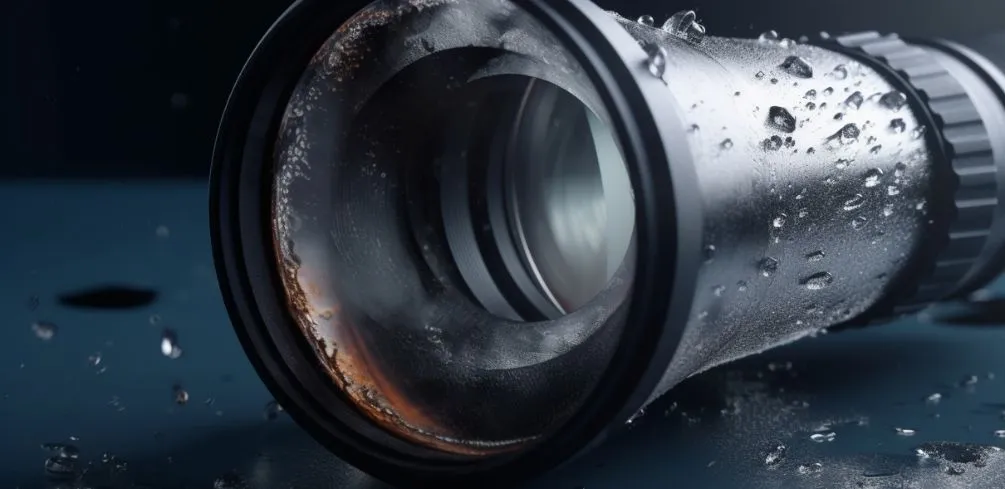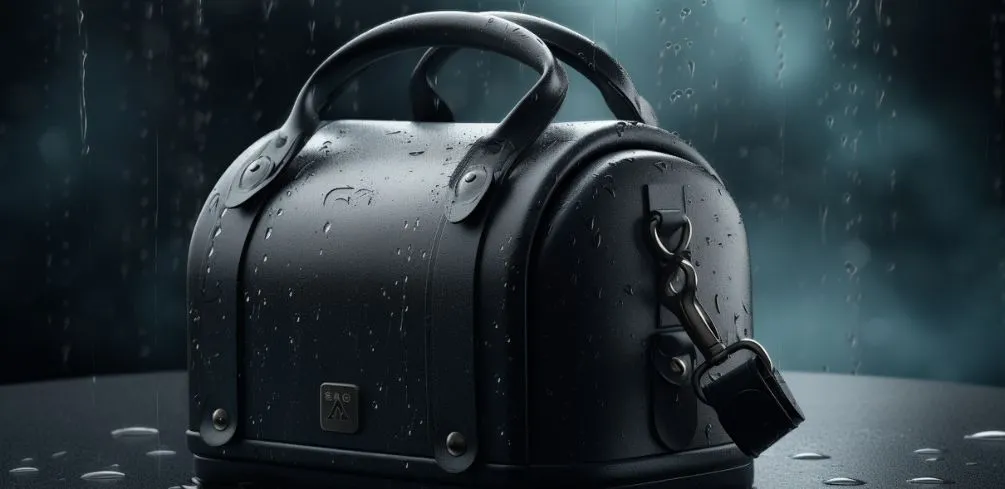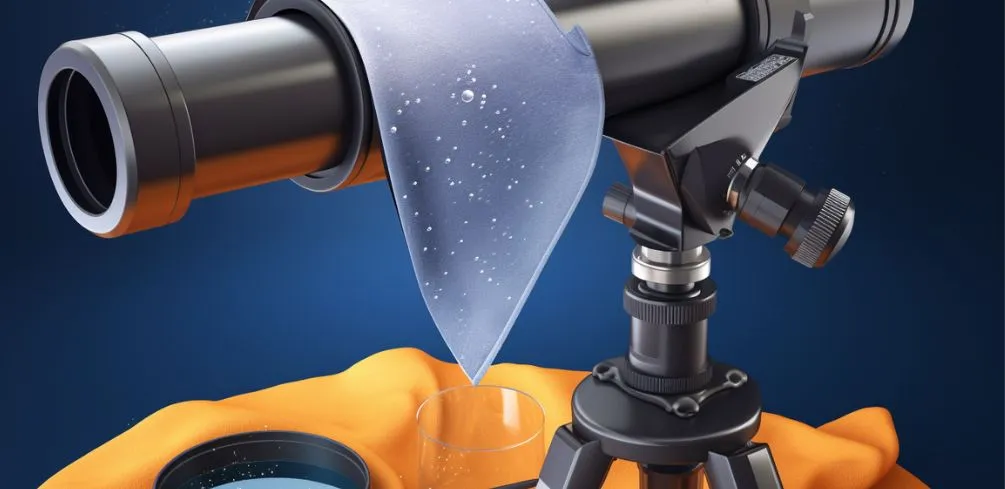As an avid stargazer, you know that your telescope is not only a valuable investment but also a gateway to unlocking the mysteries of the cosmos. However, like any other precision instrument, telescopes are sensitive to their environment and can be adversely affected by moisture exposure.
You may have wondered if your beloved telescope can get wet and what potential damage it might suffer as a result. In this article, we will delve into the risks of moisture exposure, provide tips on how to protect your telescope from water damage and outline steps you can take if your precious device does get wet.
Understanding the intricate workings of your telescope is crucial in ensuring its longevity and optimal performance. By learning about potential hazards such as water-related damage and taking preventive measures against them, you’ll be better prepared for those unexpected events that threaten to dampen your celestial explorations.
So let’s embark on this journey together as we explore the effects of moisture on telescopes while providing valuable insights into preventing and repairing any resultant damages – empowering you with the knowledge that will keep your passion for astronomy alive and thriving under all conditions!
Understanding the Risks of Moisture Exposure

You might not realize it, but exposing your precious stargazing tool to moisture can bring a world of trouble! Moisture effects on telescopes can range from temporary performance issues to permanent damage.
Condensation issues arise when there’s a difference in temperature between the telescope and its environment, which may cause water droplets to form on the optics and internal components. Humidity concerns are also particularly relevant, as high levels of humidity can lead to corrosion or mold growth inside the device.
To protect your telescope from these problems, you should consider using waterproof materials and weather-resistant options for storage and transport. Telescope covers made from water-resistant fabrics are an excellent choice to shield your instrument from rain, dew, or frost while outdoors.
Additionally, silica gel packets can be placed inside carrying cases or near sensitive components to help absorb any excess moisture that may accumulate over time.
By being proactive in addressing moisture-related risks and investing in protective measures such as weather-resistant storage solutions, you’ll be better equipped to maintain the longevity and performance of your telescope. Furthermore, regularly inspecting your equipment for signs of moisture damage will ensure that any potential issues are promptly addressed before they escalate into more significant problems.
Remember, a well-cared-for telescope is key to unlocking countless enjoyable nights under the stars!
Protecting Your Telescope from Water Damage

It’s crucial to shield your precious stargazing equipment from potential water hazards, ensuring its longevity and performance. Water damage can lead to problems with your telescope’s optics, electronics, and mechanical components.
To avoid these issues, you can employ several preventative measures that will provide protection against moisture and water intrusion.
- Moisture barriers: Investing in a quality moisture barrier is essential for keeping your telescope safe from damp conditions. These barriers work by sealing off your equipment from the surrounding environment, preventing condensation buildup and other forms of moisture-related damage.
- Waterproof cases: Storing your telescope in a waterproof case when not in use is an excellent way to ensure it remains dry and protected. Look for cases made from weather-resistant materials that offer a snug fit around your telescope.
- Silica gel packs: Placing silica gel packs inside your telescope case or storage area can help absorb any excess humidity present. Regularly replacing these packs will maintain their effectiveness in reducing moisture levels.
- Climate control: If possible, store your telescope indoors in climate-controlled areas where temperature fluctuations are minimized. This helps reduce the likelihood of condensation forming on the lens or other sensitive components.
By incorporating these strategies into your routine care and maintenance plan for your astronomy gear, you’ll be taking significant steps toward safeguarding it against water damage. Remember that prevention is always better than dealing with repairs after the fact: investing time now in protecting your equipment will undoubtedly pay off down the line as you continue enjoying clear views of the cosmos without disruptions caused by moisture-related malfunctions.
So go ahead – give those telescopes some TLC (Telescope Loving Care), and they’ll reward you with years of breathtaking celestial observations!
Steps to Take if Your Telescope Gets Wet

Despite your best efforts, sometimes the storm clouds roll in unexpectedly, so let’s discuss what to do if your trusty stargazing companion encounters a surprise shower.
The first step after getting caught in the rain is to immediately cover your telescope with emergency coverings like a waterproof tarp or plastic sheeting. This will protect it from further damage while you move it to a dry location.
Once you’re under shelter, begin assessing the situation by checking moisture indicators such as condensation on lenses or water droplets inside the tube assembly. If there’s visible moisture, switch to drying techniques like using a hairdryer set on low heat or placing silica gel packs near affected areas (but not directly touching delicate optics).
Remember that speed is essential here; the longer your telescope remains wet, the greater the potential for irreversible damage.
In addition to thorough drying procedures, consider investing in preventive measures such as waterproofing materials and accessories designed specifically for telescopes. These can include water-resistant cases for eyepieces and other components, sealants for exposed screws and bolts, and even purpose-built weatherproof covers that can be quickly deployed during unexpected downpours.
Just make sure that any products you choose are compatible with your specific telescope model and won’t cause harm to its sensitive components.
Regularly inspecting seals and gaskets for wear will also help keep moisture out of critical areas. While prevention is always better than dealing with repair costs later on, accidents do happen – so it’s important to know if your homeowner’s insurance policy might cover any resulting damage from water exposure.
Review your policy closely or consult with an agent to see if coverage extends beyond just fire or theft incidents; some policies may offer protection against accidental water damage as well! Keep records of purchase receipts and any maintenance performed on your telescope as documentation should you ever need to file a claim.
By taking these precautions and knowing how to react when faced with soggy skies, you’ll be better prepared to protect your valuable stargazing equipment from the elements and continue exploring the cosmos for years to come.
Tips for Preventing and Repairing Water-Related Damage
Taking care of your stargazing gear and swiftly addressing any moisture issues will ensure many more nights of celestial exploration without the worry of costly setbacks.
To prevent water-related damage, it’s essential to invest in some preventive measures that will keep your telescope safe and functioning optimally.
Here are a few tips to help you protect your equipment from the elements:
- Use moisture-proof materials: When storing or transporting your telescope, opt for cases made from moisture-resistant fabrics or coatings that can repel water and reduce the risk of internal condensation.
- Waterproof cases: Consider investing in a waterproof case specifically designed for telescopes. These cases often provide additional cushioning and protection against impact, as well as sealing out water completely.
- Humidity control: Store your telescope in an environment with controlled humidity levels to minimize the risk of condensation forming on delicate components.
To repair water-related damage, start by assessing the extent of the problem – this could involve checking for signs of corrosion on metal parts or mold growth on lenses. If you’ve caught any issues early enough, simple drying techniques like airing out damp components or using silica gel packets can be effective at removing excess moisture before it causes lasting harm.
However, if there is significant damage due to prolonged exposure to water or humidity, it may be necessary to disassemble certain parts for thorough cleaning and possibly even replacement.
Condensation prevention is another key aspect when it comes to safeguarding your telescope from potential harm caused by moisture. Always allow time for temperature acclimatization before using your scope outdoors; sudden changes in temperature can lead to lens fogging and other complications related to condensation buildup.
Additionally, consider investing in dew shields or heated dew straps, which actively work against condensation formation during observing sessions by maintaining a slightly warmer temperature around exposed surfaces.
By following these preventative measures and promptly addressing any signs of water infiltration, you’ll be able to enjoy countless nights under the stars with confidence in your telescope’s longevity and performance.
Frequently Asked Questions
How does the type of telescope (refractor, reflector, or catadioptric) affect its vulnerability to water damage?
Navigating the waters of telescope types can feel like sailing through a storm, but understanding how each type’s vulnerability to water damage is affected by its design is crucial.
Refractor telescopes often have waterproof coatings on their lenses, helping to protect them from moisture-related issues. Additionally, dew prevention measures are necessary for all telescope types, as condensation impacts the clarity and quality of your celestial observations.
The material durability of reflector telescopes’ mirrors makes them less susceptible to water damage compared to refractors; however, they still require proper maintenance and care.
Catadioptric telescopes combine the best features of both refractors and reflectors while minimizing condensation risks with their sealed optical tubes.
To keep your telescope in shipshape condition regardless of its type, invest in weather-resistant storage solutions that shield it from harsh elements when not in use.
Are there any specific telescope brands that are more resistant to moisture exposure?
As an avid stargazer, you’ll be delighted to know that certain telescope brands and models are designed with moisture resistance in mind. These telescopes often incorporate moisture-proof materials and waterproof coatings to protect the optics and internal components from water damage.
When shopping for a telescope, look for features such as nitrogen or argon-purged optics, which can help reduce internal fogging caused by temperature fluctuations. Additionally, some manufacturers offer weather-resistant cases or covers specifically designed for their products to provide an extra layer of protection against the elements.
By selecting a telescope built with these safeguards, you can ensure that your investment stays safe even when exposed to damp conditions during those memorable nights spent exploring the cosmos.
Can high humidity levels cause damage to telescopes even if they don’t get visibly wet?
High humidity levels can indeed cause damage to your telescope, even if it doesn’t get visibly wet. Prolonged exposure to moisture in the air can lead to condensation on optical surfaces, causing fungal growth and potential corrosion of metallic components within the telescope assembly.
To protect your investment from these issues, be sure to employ dew prevention methods like using a dew heater or shield during observations in humid conditions. Additionally, consider investing in waterproof storage solutions such as sealed cases, desiccant packs, or dry cabinets when storing your telescope between uses.
By taking these precautions, you’ll ensure that your optics remain clear and free from moisture-induced damage for optimal stargazing experiences.
How does the use of telescope accessories, like eyepieces and filters, impact the chances of water-related damage?
Proper eyepiece protection and filter maintenance can significantly reduce the risk of water-related damage to your telescope. Investing in waterproof cases for storing and transporting your eyepieces, as well as applying moisture-resistant coatings on filters, can prevent potential issues from high humidity levels or accidental exposure to water.
Additionally, using dew prevention methods such as dew shields or heated strips around the telescope’s optics will help keep condensation at bay during observing sessions. By taking these precautions, you’ll ensure the optimal performance of your telescope accessories while minimizing the chances of moisture-induced complications.
Are there any long-term effects of moisture exposure on a telescope’s optical performance?
Even if your telescope seems to be functioning normally after exposure to moisture, there may still be long-term effects on its optical performance. Moisture absorption can lead to a gradual decline in image quality due to the degradation of coatings on lenses and mirrors.
Condensation issues may also cause internal components to corrode over time, which could ultimately result in mechanical failures.
To protect your telescope from these potential problems, it’s essential to take protective measures such as using waterproof materials for storage and transportation and ensuring proper ventilation during use.
Regular inspection and maintenance can also help address any early signs of coating degradation or other moisture-related concerns before they seriously impact your telescope’s performance.
Conclusion
Remember the tale of the brave little telescope that ventured out into the damp night? Like a ship lost at sea, it fell victim to moisture’s relentless wrath. Don’t let your telescope suffer the same fate; be vigilant and proactive in protecting it from water damage.
If misfortune strikes and your precious optic instrument is drenched, fear not. With proper care and repair techniques, it can be restored to its former glory, like a phoenix rising from the ashes.

